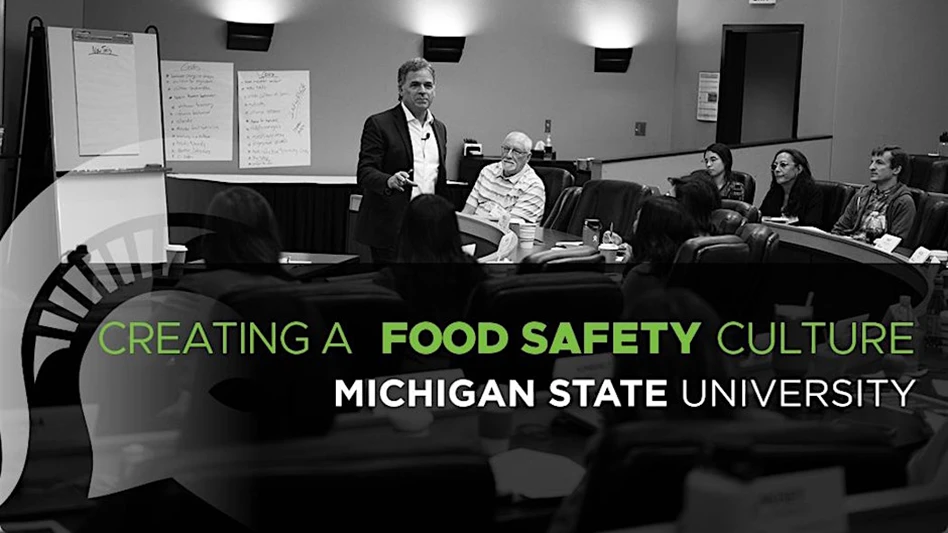Natural foods are gaining ground in the marketplace. In fact, consumer research group Mintel reports that one-third of the 2008 food and bev-erage launches in the U.S. touted natural claims.
While one could deduce from such statistics that a massive surge is underway in natural processing, such deductions get a bit foggier when one attempts to define the criteria against which the claim is made.
Although organic is clearly defined by USDA’s National Organic Program (NOP), only three federal definitions exist for natural foods – flavors, meat and high fructose corn syrup (HFCS). Beyond that, said John Ashby, General Manager, Ingredients, for California Natural Products, "There are no other definitions for what natural means."
And even the three definitions cause a murkiness. Take, for example, HFCS. By FDA definition, it is considered to be natural if it meets specific processing requirements. However, a meat product which contains HFCS is currently deemed not natural by the USDA (which controls the def-inition of natural in meats), and would not be allowed to be labeled as such.
In addition, Ashby said, "the naturalness of HFCS is often questioned by the natural products side of food for many reasons, not the least of which is that it is often made from genetically modified corn."
With a background in product development and flavor ingredients, Ashby has been involved with organic and natural food issues, processes and development for 20 years. He is currently on the California Department of Food and Agriculture Organic Products Advisory Committee, and speaks and writes on various organic topics.
Ashby sees natural foods as being in a position similar to that of organics 15 years ago. There are many ideas as to what the word means, but no real regulations.
Buyer Beware. This makes natural "a buyer beware area," as Ashby termed it. "You can pretty much call anything natural that you want," he said, "No one is stopping you from putting the word natural on food. So it’s a real, real popular term to put on foods."
Other than meats, natural is essentially defined by what the industry accepts, he said, explaining, "There is no central defining (group); there is no auditing agency. If there is a current arbiter of what’s natural and what’s not, it’s Whole Foods. They’ll say we don’t think this is natural, so we won’t sell the product."
Natural Distinction. So with the word natural in its name, how does CNP define the term?
"An important part of our process is to use whole ingredients (actual brown rice) and then process in a way that keeps as much nutrition as possible in the ingredients, not stripping the product down to merely carbohydrates; keeping the nutrition of the ingredient as close to the whole food as possible," Ashby said.
All of CNP‘s rice-based products are processed according to organic specifications, with the only difference being that if organic rice was used, the result is an organic product. "Many in the industry have therefore inferred that our non-organic products are natural," Ashby said, adding, "It is not a definition, but it is a discussable, verifiable point."
While Ashby sees the actual line as being grey, there is a growing distinction between natural and non-natural foods and related health benefits.
"There’s this grey line that is not defined where it has gone too far from a food and become too much of a chem-ical," he said. "It keeps coming back to the actual food is better than mucked-up versions of it."
Consumer Interest. Despite this lack of definition, consumers are showing increased interest in natural foods, primarily because the understanding of nutrition has dramatically changed. "If you go back 30 years, the model for nutrition was the deficiency model," Ashby said. "You just had to have these few vitamins at this certain level, and as long as you got that, it didn’t matter what else you ate. Now we know that that’s not the case."
In addition, interest is growing as consumers are:
- becoming wary of artificial ingredients as being unhealthy and artificial substitutes as less nutritious;
- growing concerned about pesticide effects on the environment, as well as on farm workers and urban children;
- gaining information on whole foods as containing more of the needed nutrition;
- finding Web research showing a dietary need for the secondary metabolites found in food.
Thus, he explained, interest in natural foods is not a phenomenon in and of itself, rather it is part of the whole schema of growing knowledge in pub-lic health.
Ashby also sees this growing interest and knowledge as leading toward more definition and regulation. "I think there’s going to be increased pressure coming from the direction of people objecting to labeling."
But, he added, "It took 20 years to get a set of organic regulations. I don’t see [natural regulations] as happening in my functioning lifetime. I see little pieces of it happening, but it may end up being a category that is self-regulated."
The author is managing editor of QA. magazine. She can be reached at llupo@giemedia.com.

Explore the March 2009 Issue
Check out more from this issue and find your next story to read.
Latest from Quality Assurance & Food Safety
- Non-GMO Project Launches Non-Ultraprocessed Foods Verification
- FDA to Hold Webinar on Updated ‘Healthy’ Claim
- High-Tech Partnership Creates Natural Blue Color for Greener Tomorrow
- Kraft Heinz Hosts Innovation Challenge for Sustainable Packaging
- FDA Requests Information on Poppy Seeds
- Danone North America Opens Applications for Annual Gut Microbiome, Yogurt and Probiotics Fellowship Grant
- WSDA Confirms First Bird Flu Case in 2025
- Senators Call Out FDA for Proposed Cuts to State, Local Food Safety Programs




